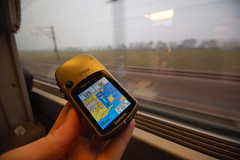video credit to wwwinsanelygreatmac
My
strategy for this Instructional Strategy Wiki was the Independent Study
strategy. As a group, I believe our Introduction page was well described, as we
included a good definition for instructional strategies and each one of its
strategies. According to effectiveness of our strategies, I believe each
classmate showed signs of researching its proper use and accuracy in class. To
analyze and critique our Wiki, we used different examples of teachers applying
these strategies in their classrooms. In terms of visuals, we used a variety of
them, except for the use of tables. The uniqueness of this project was about
using cyber messaging to complete this project; and unfortunately, I believe we
weren’t proficient enough on it.
Just
like this Instructional Wiki, I went through different processes to create my
assignments. My processes began by first learning how to use the different
technological techniques like hyper linking in my paper, posting visuals like
photos and videos, and using the creative commons photographs to complete my
assignments. My blog and discussion posts served me as a practice to then be
able to complete the larger projects like the ones mentioned initially.
There
are many negative and positive experiences lived while working on these large
projects as a group. Some of the negative experiences were the coordination of
time, the last minute unfinished independent work from each student, and
dealing with the different efforts and personalities in the group. Some of the
positive experiences were the sharing of ideas in between each other, the
motivation we give to each other to make this project the best one, the
corrections that I receive to make my future projects better, and the delight
you feel together as a team after finish your wonderful project.
There
are also some differences and similarities when working on these collaborative
projects on the process and on the
product. One of the first similarities is visioning the product of your project
throughout the process. I believe that this is one of the best feelings for any
student who is working on a project and he/she is loving what they are doing. If
you don’t see the end from the beginning, it might be difficult for you to
accomplish a great product. Another similarity is planning out the steps to
accomplish the product you want to obtain. On the other hand, there is also one
difference. One of the differences is that the product usually ends up looking
differently than the way you though it will look. Even though you are always
planning on making one specific product, your process is always changing,
causing your product to change.
In my
future as an educator, there is one assignment and activity that I will be interested
in using in my classroom. The activity that I will apply was the finding of the
sips of paper through the GPS
tracking device. This activity really expanded my knowledge on technology
and made me grow a stronger interest on it. The fun part about this finding was
that these pieces of paper had questions regarding our lesson in class. The
assignment that I will be interested on using was the Digital Story Telling
activity. For this assignment, I used a website called Prezi, next to my classmate Jessica, and created a lesson on the developmental process of
the butterfly. I will call this website “The newer way of powerpoint,” with fun
zooming and visuals for your presentation. This assignment gave us the capacity
to enjoy the voyage on the internet and use it on what we love the best.

photo credit to stevec77
Resources
Adorama (2012). Bushnell BackTrack D-Tour Personal GPS Tracking
Device, Green. Retrieved December 6, 2012.
Lawson, Eric (2011). iPads, iPod Touches, and iPhones as Assistive
Technology in Education. Retrieved December 6, 2012.
touches-and-iphones-as-assistive-technology-in-education/47768
Prezi (2012). Retrieved December 6, 2012. http://prezi.com/